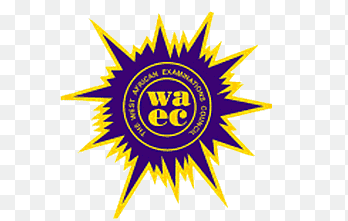
WAEC 2026 specimen >> WAEC Practical Specimens 2026/2027 for all subjects
WAEC 2026 PHYSICS PRACTICAL SPECIMEN & INSTRUCTIONS
QUESTION 1 (Mechanics)
– Retort stand
– Spring balance
– Beaker
– Water
– Masses
– Liquid Labelled L (Kerosene)
– Other necessary materials
QUESTION 2 (Optic)
– A rectangular prism
– Optical pins
– Thumb pins
– Drawing board
– Plain sheets of paper
– Other necessary materials
QUESTION 3 (Electricity)
– Two resistance wire of different
– materials (100cm long)
– Metre bridge
– A cell of emf, E
– Galvanometer
– Rheostat
– Key/switch
– One standard resistor Rx = 1Ω
– Other necessary materials
WAEC 2026 CHEMISTRY PRACTICAL SPECIMEN & INSTRUCTION
each candidate for Chemistry practical should be provided the following:
(a) One Burette of 50cm3 of capacity
(b) One pipette, either 20cm3 or 25cm3
(All candidates at one center must use pipettes of the same volume, these should be clean and free from grease).
(c) The usual apparatus for titration
(d) The usual apparatus and reagents for qualitative work including the following with all reagents appropriately labeled:
(i) dilute sodium hydroxide solution
(ii) dilute hydrochloric acid
(iii) dilute trioxonitrate(v) acid
(iv) silver trioxonitrate(v) solution
(v) aqueous barium chloride
(vi) aqueous ammonia
(vii) lime water
(viii) red and blue litmus paper
(ix) dilute tetraoxosulphate(vi) acid
(x) acidified potassium dichlorate solution.
(e) Spatula
(f) Filtration apparatu
(g) One beaker
(h) One boiling tube
(i) Four test tubes
(j) methyl orange indicator
(k) Glass rod
(l) Wash bottle containing
distilled/deionized water
(m) Burning splint
(n) Watch glass
(o) Bunsen Burner/source of heat
(p) Droppers
(q) mathematical table/calculator
(r) phenolphthalein indicator.
Question 3
(a) 150cm3 of potassium tetraoxomanganate (VII) solution in a corked flask or bottle labeled ‘An’. These should all be the same containing 1.58g dm3 of KMnO4 solution.
(b) 150cm3 of FeSO4 solution in a corked flask or bottle labeled ‘Bn’. These should all be the same containing 5.5g of FeSO4 per dm3 of solution.
(c) One spatulaful of sodium trioxocarbonate (IV) and one spatulaful of lead (II) nitrate in a specimen bottle labelled ‘Cn’. The component of the mixture should be in the ratio 1:1 by mass. This must be the same for all candidates.
¶ In all cases, more material may be issued if required.
¶ The actual concentration of ‘An’ and ‘Bn’ must be stated in the Supervisor Report Form. The candidate will assume that the concentrations are exactly as stated in the question paper.
¶ It should be noted that schools are not allowed to amend the information provided on the question paper or substitute any substance/solution for those specified in these instructions.
WAEC BIOLOGY PRACTICAL SPECIMEN
Specimen A – Gill of fish (freshly procured)
Specimen B – Whole liver from a domestic fowl with gall bladder attached, in a Petri dish (freshly procured)
Specimen C– Lung from a domestic fowl on a white tile (freshly procured)
Specimen D – Whole gizzard from a domestic fowl with gall bladder attached, in a Petri dish (freshly procured)
Specimen E – Whole intestine from a domestic fowl with gall bladder attached, in a Petri dish (freshly procured)
Specimen F – Ginger rhizome (fresh)
Specimen G – Onion bulb
Specimen H – Leaf of Bryophyllum (with adventitious roots)
Specimen J – Cassava stem
Specimen K– Cassava tuber
Specimen L – Thoracic vertebra
Specimen M– Humerous bone
Specimen N– Mango seed (dry)
Specimen P– Femur bone
Specimen Q– Lumbar vertebra
Specimen N– Orange seed (dry)
WAEC AGRIC SCIENCE PRACTICAL SPECIMEN & INSTRUCTIONS
A – Ranging Pole
B – Arrow
C – Measuring Tape
D – Wooden Peg
√ For specimens E, F and G, you are requested to get some quantity of dry sand, dry clay (ground) and dry loam (ground) respectively.
√ Get three capillary tubes, label each of them E, F and G.
√ Close the lower ends of each of the capillary tubes with a plug of cotton wool.
√ Put the:
(i) dry sand into the capillary tube labelled E;
(ii) dry clay (ground) into the capillary tube labelled F;
(iii) dry loam (ground) into the capillary tube labelled G.
√ Shake or tap the ends of the capillary tubes to make sure that the particles are tightly packed/settled in each of the capillary tubes.
√ Get a water trough and put water in it until it is half full.
√ Set the capillary tubes securely in the trough.
√ Leave the setup to stand for 24 hours before the examination.
H – Maize Weevil
I – Bean beetle
J – Grasshopper
K – Cotton stainer
L – Tilapia (whole and fresh)
M – Hay
N – Fish meal.

I love it